The following essay by El Inglés is the second in a six-part series that examines the sociopolitical effects of mass immigration into the Western democracies.
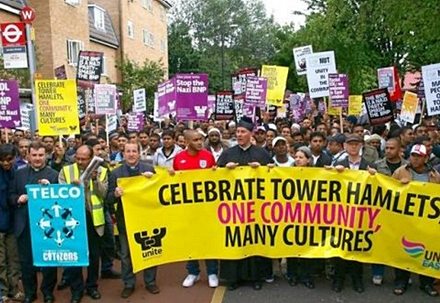
Ethno-Religious Diversity and the Limits of Democracy
by El Ingles
Part Two: Political Diversity and Ethnic Diversity
The first post in this series introduced a statistical analysis of political systems that includes various terms referenced by abbreviations in later parts of the text. For the reader’s convenience, a list of those abbreviations and their meanings is below:
| Abbr | Term | Explanation | ||
| PP | Policy Point | Policies actually being implemented by a government at any point in time | ||
| IPP | Individual Policy Point | Policies preferred by an individual | ||
| DI | Discontentedness Index | Distance between the PP and an IPP | ||
| MDI | Mean Discontentedness Index | Average of the DIs of individuals in the population | ||
| TD | Threshold Discontentedness | The level of DI above which an individual considers the government illegitimate | ||
| CZ | Contented Zone | The interior of a circle having a radius of the value of TD | ||
| DZ | Discontented Zone | The area outside the CZ circle | ||
| DZF | Discontented Zone Fraction | The fraction of the population occupying the DZ |
See Part One for a more detailed explanation.

More System Diagrams and Their Implications
Now that we have introduced the two concepts most crucial to our analysis, the MDI and the DZF, let us consider some more system diagrams. We will stipulate here that each of our systems, unless stated otherwise, consists of one million individuals, who will be represented by forty IPPs, each of which corresponds to twenty-five thousand individuals whose political positions are so close to each other as to be, for our purposes, identical. This seems like a reasonable way of representing large numbers of people without overburdening our system diagrams with outlandish numbers of points. Our introductory explanation of system diagrams out of the way, we will henceforth present them with crosses for PPs and larger green circles as IPPs, the centre of each circle being the exact position of the IPP.
Consider the following two systems:
Superficially similar in terms of shape, these two system diagrams actually represent quite different systems. Calculating precisely what the MDIs are for these systems would be time-consuming and difficult, but the important point is to give ballpark figures and make clear the direction of change when comparing multiple diagrams.
In Diagram 6, we see that five circles have their centres in the DZ, for a DZF of 12.5%. The MDI we will take as being 1.4, given our earlier stipulation that the side length of a system diagram is always eight units. In Diagram 7, we see that 13 circles are now in the DZ, for a DZF of 32.5%. The MDI we will take as being 1.9. That both the MDI and the DZF are higher for Diagram 7 is apparent at a glance, and we therefore understand that it represents a polity of much lower political stability than Diagram 6.
Let us focus on Diagram 7. The PP, intuitively seeking, seems reasonably well placed in that it is fairly central, and therefore constitutes a compromise position. Is this intuition correct? Calculating such things exactly would be time-consuming and is unnecessary for our purposes here anyway. Instead, we can use a visual-intuitive approach to discern general trends.
In this diagram we have shifted the PP and therefore the entire CZ upwards so as to put it roughly three quarters of the way up through the diagram. What effects does this have? We hope it is clear to readers that the MDI will increase as a consequence, which is to say the average distance from PP to IPPs has increased, as we are progressively moving further away from most IPPs and towards an ever smaller number.
What of the DZF? As we move from centre to periphery, it is clear that the number, and therefore the fraction, of our IPPs inside the circle falls, as it starts to include more and more empty space. We count 16 out of 40 circles as being in the DZ, for a DZF of 40%. This increase in both MDI and DZF makes this a radically unstable society, as we would expect of one whose PP has been positioned so as to please a subset of IPPs that is itself towards the fringes of the distribution.
The significance of this is as follows. In any system, there will be a position for the PP that minimizes the MDI for the system as a whole. As we see in the comparison between Diagrams 6 and 7, this minimum MDI may be higher or lower, but it will exist for any system diagram. Once the PP has been positioned there, there will be nothing else the government can do to bring the MDI down. The minimum MDI could only be reduced by moving the IPPs themselves around on the diagram, squashing them more closely into a single area. But this would consist, in the real world, of reengineering peoples’ political beliefs, which we will assert here is not possible, least of all in non-totalitarian societies.
In any given system diagram then, the minimum value the MDI can take on is a function of the distribution of IPPs. In a polity represented by a system diagram with a more or less optimally placed PP and a high MDI, there will be a generally high level of political discontent and anger, and the government has no means of reducing it. Whether or not bringing the MDI to this minimum will also take the DZF to a minimum is a question of whether or not the IPP distribution is symmetrical or not. In our examples so far, it has been, but consider the following system diagrams:
Here, we see something quite different. The concentration of people on the left of the diagram, through their greater numbers, result in the PP being quite close to them if we stipulate that the MDI has been minimized. However, the spike of people on the right results in three IPPs being in the DZ, for a DZF of 7.5%. If we drag the PP to the right a little, as in Diagram 10, then we push the MDI up, but reduce the DZF to zero by bringing more people into the CZ. Now that we see this, we can ask ourselves whether a government is likely to try and reduce the MDI at the cost of the DZF increasing, or vice versa. Note that this is a conundrum that is likely to arise when political extremism is more prevalent in some segments of society than others, which will result in the asymmetric distributions we mentioned. In the remainder of this document, we will be dealing with system diagrams that have fairly symmetrical IPP distributions and that therefore do not present many problems in this regard. It is still important to understand that this need not be the case.
There is a parallel of sorts between the concepts we are introducing to try and understand political systems and those commonly used to try and understand economic systems. In both cases, it can be argued that for a given system, there exists a stable, equilibrium state which will tend to attract a key variable towards itself over time through the aggregate behavior of all the actors in the system. Though these actors act on the basis of their own perceived self-interest, the system exhibits a higher-level order that, in theory at least, creates a high level of net benefit across the system as a whole.
To take the most obvious example from classical economic theory, we can think of supply and demand curves varying as a function of price. Supply increases with price, demand decreases with price, and there is a point at which the two lines meet, at which supply exactly equals demand and exactly the right quantity of goods is produced. This is called the market clearance price.
At higher prices, supply is higher than demand, and some supply goes unsold. This puts buyers in a strong position, where they can choose their products with care. Some merchandise goes unsold, and producers cut production and cut prices to compete for customers. This pushes the price down, supply down, and demand up, the system shifting again towards the market clearance price.
At lower prices, everything produced sells, with surplus demand remaining. This motivates producers to produce more to tap into the unmet demand, and to increase their prices to take advantage of the competition for their products, as we now have not producers competing for customers, but customers competing for produce. This pushes the price up, supply up, and demand down, the system again shifting towards the market clearance price.
No actor in the system is trying to do anything other than maximize their own personal utility. Nonetheless, the system as a whole displays a higher-level order in which supply and demand come to perfectly match each other, at which there is no surplus production and no unmet demand. Any price higher or lower will tend, over time, to converge on this state despite the fact that no one within the system is interested in bringing about this end, or has even necessarily thought about it in these terms at all.
Similarly, in our system diagrams, if we ignore the CZ/DZ distinction (an important wrinkle), we can see the PP as a parallel to the price, the PP that minimizes the MDI as a parallel to the market clearance price, and a democratic political system as equivalent to a free market system. Here, in the political marketplace of ideas, in which each elector exerts their own pull on the PP, we can expect the PP to be pulled into a position at which the MDI is more or less minimized. Any party that proposes a PP a long way away from the optimal MDI will attract only that relatively small number of voters closer to it than to any other party’s PP. Such parties will alienate voters, fail to win elections, and remain unable to implement their policies. Their PPs therefore remain purely hypothetical.
Looking again at Diagram 8, we see that the MDI is high, and that the current PP is well away from the bulk of the electors. In a proportional representation electoral system with a universal franchise, these people would surely vote for political parties with political platforms (which is to say, proposed PPs) closer to their own IPPs. These parties would garner many votes, giving them some amount of political power, with which they would pull the PP away from its current, non-equilibrium position.
It should be noted that, just as the supply and demand model described above is only the very first step in understanding free market systems, these brief discussion of system diagrams as equilibrium-seeking systems is extremely rudimentary. In the same way that there is no guarantee that any market is either in equilibrium or converging on it at any moment in time, there is no guarantee that a democratic political system will be at or converging on its equilibrium PP. Electoral systems vary widely from one democracy to another. Some are designed relatively rationally, some have grown more organically, and some were designed quite carefully some time in the past only to find that political and demographic change have varied them less defensible today. Nonetheless, just as it is widely acknowledged that, in many contexts, much of the time, markets are at least reasonably good mechanisms for getting closer to market clearance prices, it seems that democratic political systems are likely to be reasonably good mechanisms for moving PPs around system diagrams so as to bring MDIs closer to their minima for any given system.
When people observe that, by and large, democratic political systems do a better job than their autocratic counterparts of creating political stability and harmonious relationships between groups in a society, it is this tendency of democracies to drift towards, and remain close to, the equilibrium PP that they are actually referring to. In the case of a dictatorship, we understand that the dictator is almost certainly not trying to find the equilibrium PP. He may well simply be trying to favour his own ethnic or religious group, and content to use brute force to keep everyone else in line, come hell or high water. In such a case, we would not be at all surprised to see a high MDI and high DZF, as in Diagram 8. However, even if we assume a dictator is a relatively benign figure trying to husband his country towards a prosperous, stable future, and even if the system diagram of his country is such that this is possible in principle, it seems clear that trying to make the right decision time after time without any way of knowing what people really want has the potential to be a very fraught process. There will be authoritarian successes, such as Singapore, and democratic failures, such as the US in the period immediately prior to its civil war. But democratic politics is likely to be a more reliable way of getting close to the equilibrium PP than authoritarian politics, assuming that a given authoritarian system is even trying to do so in the first place.
The Relationship Between Political Diversity and Ethnic Diversity
We claim here that increasing ethnic diversity in a polity will inevitably result in an increase in political diversity in that polity as well, and will attempt to justify this claim before considering its implications. Readers should understand that for the purposes of this section, we are taking all the cultural and religious differences that tend to exist between disparate ethnic groups and treating them all under the heading of ethnic diversity.
There are two different types of political diversity that can exist between ethnic groups in a polity: essential political diversity and non-essential political diversity. Essential political diversity is that which exists between groups due to the immutable characteristics of those groups, which is to say, for our purposes, their ethnic identities. Non-essential political diversity is that that exists between ethnic groups as a consequence of unequal distributions of characteristics shared between those groups. Let us describe the two in reverse order.
Non-Essential Political Diversity
If two different ethnic groups within a society are, on average, at different levels of professional, educational, and socioeconomic attainment, then they will tend to vote for different political parties as a consequence. Taking the example of white people and black people in the US, we see in presidential election after presidential election that there is an overwhelming tendency for black people to vote for the Democratic candidate, with 90%+ of the black vote going to the Democrats as a general rule.
If an ethnic group, such as black Americans, is disproportionately reliant on being subsidized by others, we must expect its members to tend to vote for parties that promise to continue, if not increase, those subsidies. However, we can also see that wealthier, more successful black Americans will not necessarily share this tendency, and that poor people who are not black may well share it for the same reasons. These political positions would constitute non-essential political diversity when set against those who wished to shrink the welfare state, be they white, black, or anything else. Note that we make no comment here on the source of the achievement, income, or wealth gaps between white and black Americans. Our definition of non-essential political diversity does not depend on whether black people are socioeconomically outperformed in the US due to the legacy of slavery or due to an intrinsic lack of ability on the part of black people as a whole. This is a separate matter.
Essential Political Diversity
Essential political diversity is political diversity that derives not from characteristics unevenly shared between two or more populations, but from the very identities of the members of those populations. A Mexican-American living in Arizona who argues for a full amnesty for illegal immigrants and lax border enforcement, and a white Arizonan campaigning for proper border enforcement, repatriation of illegal immigrants, and an end to birthright citizenship are not best characterized as two people who happen to have made different choices from the menu of available political beliefs. They are better characterized as people whose political positions derive from who they are and are therefore not liable to being changed in the way that, for example, one might change one’s opinion on whether the possession of small amounts of illegal drugs should result in a prison sentence. This is essential political diversity, and it will relate most obviously to important, perhaps even nationally determinative questions, such as those pertaining to immigration, language, citizenship, and affirmative action.
It will not necessarily be obvious where one type of diversity ends and the other begins. Following on from the above example of black Americans, they could tend to favour income redistribution in general as described above, which would be an example of non-essential political diversity, perhaps shared with poorer whites, Hispanics or Asians. Equally, they could favour income redistribution from white people to black people per se (such as reparations for slavery), which would be an example of essential political diversity, that rooted in ethnic identity. Or they could favour nationalized healthcare as a general principle, but also because they knew that it would disproportionately improve the lot of black people, which would perhaps be a hybrid case. This difficulty in determining the exact nature of an instance of political diversity is no particular problem for our analysis. It suffices here to observe that, in ethnically diverse societies, both types will exist to a significant extent and be relatively stable over time.
We should not expect, however, that all types of ethnic diversity will lead to the same magnitude of increase in political diversity. Let us consider here two different types of immigration into Western countries: Taiwanese immigration into the United States, and Somali immigration into the UK.
Taiwanese immigrants into the US and their descendants are relatively small in number. The strong socioeconomic performance that ethnically Chinese immigrants of whatever origin tend to display positions the Taiwanese well to prosper in US life. We would expect this to bode well for allowing the maintenance of high political stability in the face of this demographic change, as the Taiwanese are operating at essentially the same level as their majority-white host population and therefore create little non-essential political diversity with their presence.
However, it must be expected that the essential political diversity of the system will increase as a consequence of Taiwanese immigration. Taiwanese populations will surely have atypically strong opinions on those aspects of US foreign policy that have the potential to impact on Taiwan itself. They are also likely to be relatively hostile towards any notion of US identity as rooted in European ancestry, and in favour of a purely civic national identity unrelated to ethnicity or national origin, a position which will set them at odds with many white Americans who believe in an American nation that grew out of specifically European peoples. Lastly, it is highly improbable that they would look favorably upon attempts to restrict immigration into the US if such restrictions were to include restrictions on Taiwanese would-be immigrants, or Asians more generally. All of these points would constitute some amount of essential political diversity with respect to the historic, white-majority population of the US, and quite probably with respect to the black American population as well, even if not in exactly the same way.
Compare this mixed picture to the disaster that is Somali immigration into the UK. The Somalis arguably constitute that human population with the most meager civilizational achievements, and their country itself is the archetype of the failed state. The Somali diaspora in the West is typified by massive welfare dependency, exceptionally poor levels of cultural integration, high crime rates, and a disturbing prevalence of appalling behaviors such as extreme violent and sexual crime, including female genital mutilation. Political elites in the United Kingdom, apparently unconcerned with the welfare of their countries and peoples, have allowed some number of Somalis to settle in the UK, with consequences largely predictable given the preceding description and their high fertility rates.
The exact legal status of Somalis in the UK is a complex matter, ranging as they do from British citizens to illegal immigrants. Nonetheless, these people are, at some rate, becoming part of the electorate, and therefore exist on our system diagram as individuals capable in principle of pulling the PP in their direction come election time.
Let us now consider exactly what sort of political diversity will be introduced into the system by the Somalis. The non-essential political diversity will be very considerable, in that the Somalis are as criminal and welfare-dependent a population as could be imagined. To the extent that they vote, they will vote for the party most willing to give them things, clustered as they are right down at the very bottom of the socioeconomic scale. To allow any substantial Somali population into a developed country is to create, at a stroke, a population which will simply exacerbate one of the key problems theorists of democracy have always had to deal with: how to stop the more numerous poor simply voting themselves the wealth of the less numerous wealthy.
Moving onto essential political diversity, it is clear that the Somalis, like any other ethnic group, retain a strong ethnic identity, and ties to their homeland and the Somali people more generally. As such, they must be expected to demonstrate essential political diversity in that they will advocate continued Somali immigration, greater political enfranchisement of Somalis actually in the UK, and lax border enforcement in general and with respect to Somalis in particular. Needless to say, it is not in the interests of the British that such a primitive, tribal, racially and culturally alien people constitute an ever larger fraction of the population of their country. Hence the drastic increase in essential political diversity that the Somalis will give rise to on a per capita basis.
This discussion hopefully makes it clear that it is difficult to generalize about different immigrant groups except insofar as we can say the following: that allowing alien ethnic groups into a country will certainly increase the essential political diversity and possibly increase the non-essential political diversity therein, with the magnitude of the changes being something that would have to be considered on a case-by-case basis.
Coming up in Part Three: Homogeneous and Polarized Systems

For previous essays by El Inglés, see the El Inglés Archives.

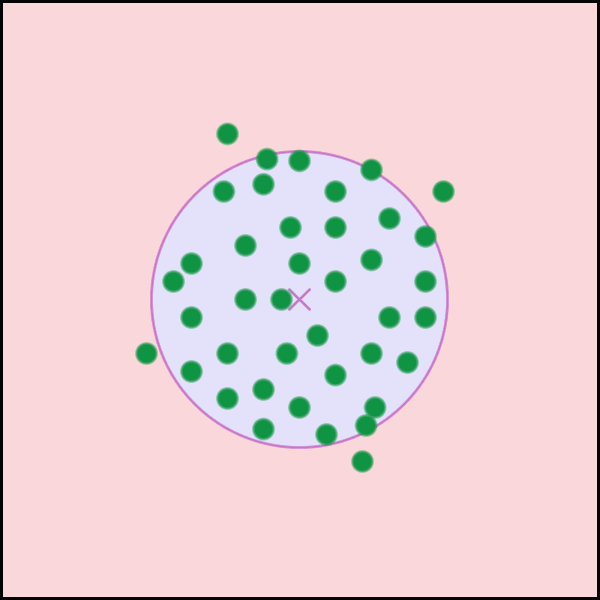
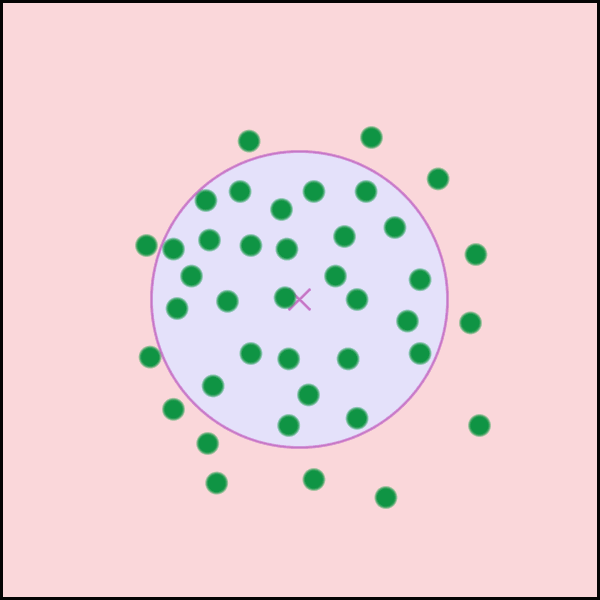
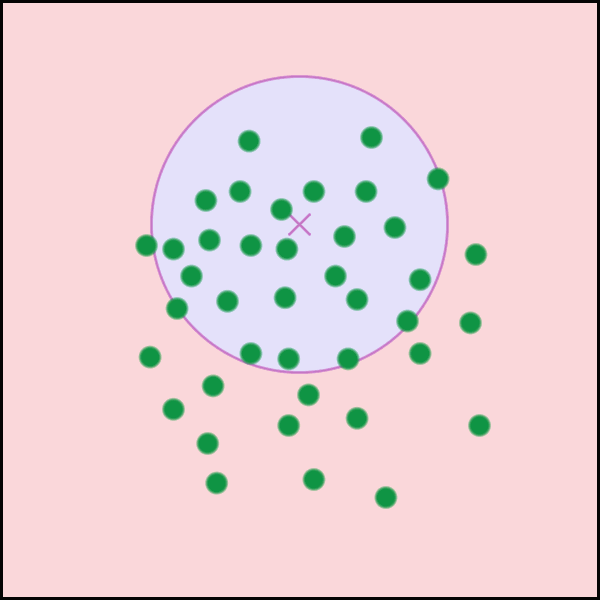
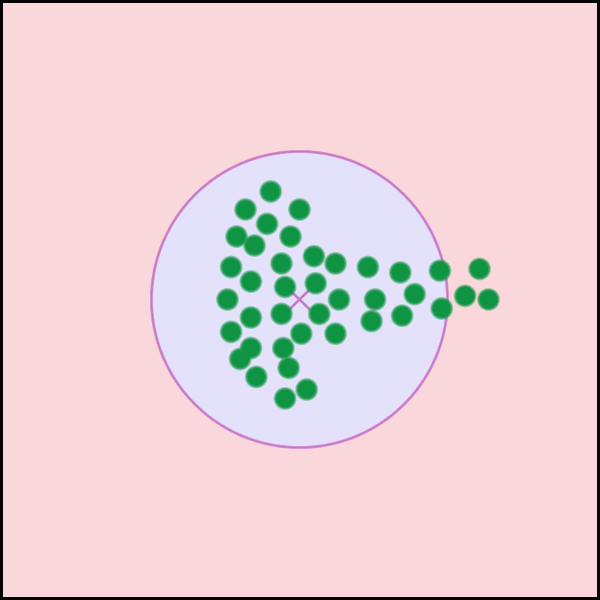
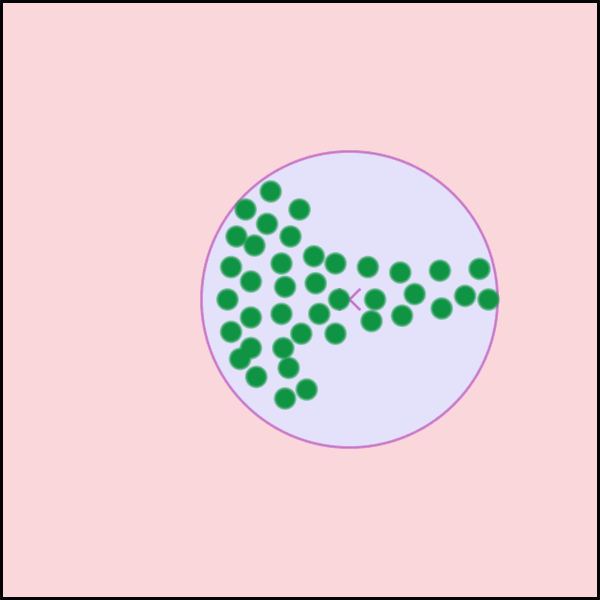
A few things here seem a bit oversimplified.
“But this would consist, in the real world, of reengineering peoples’ political beliefs, which we will assert here is not possible, least of all in non-totalitarian societies.”
It’s not possible to instantly relocate the IPPs, but over sufficient periods of time societal factions, especially if they control the media and educational systems, can certainly pull them in a desired direction. Over a generation or more, this can result in very significant IPP relocation even in a society where everyone can vote. (Just because people can vote doesn’t mean they can necessarily tell what’s going on well enough to impact it.)
“A Mexican-American living in Arizona who argues for a full amnesty for illegal immigrants and lax border enforcement, and a white Arizonan campaigning for proper border enforcement, repatriation of illegal immigrants, and an end to birthright citizenship are not best characterized as two people who happen to have made different choices from the menu of available political beliefs.”
How do you explain the Mexican Americans who are organizing to oppose executive amnesty and support border security? I think your classification here is too artificial and dichotomous. Ethnicity is going to tend to bias one’s opinions on these issues but it isn’t going to predetermine them.
The only things I would consider to be “essential” ethnic political diversity are going to be positions on things that specifically target that ethnic group based on nothing but ethnicity such as “deport all ethnic Mexicans, citizen or otherwise.”
Generally I think you’re understating the role of enculturation. For example, it’s quite believable that a 3rd or 5th generation Somali in the UK would oppose unrestricted immigration of Somali refugees, especially since they’re in a position where they can see what the problem is without some sort of “anti-racist” white guilt based denial. However they’re unlikely to support deporting all people of Somali origin including ones who have lived in the UK for generations.
Enculturation and acculturation are real phenomena, but they don’t happen when there’s zero social or legal pressure to assimilate such as the situation in European countries where “ghettoization” seems to be actively encouraged.
(I’d argue that the situation would improve in Europe if people started refusing to use the term “multiculturalism” in favor of the term “ghettoism” which more accurately and truthfully describes the ideology.)
Of perhaps greater importance is a point explicitly mentioned previously, and of significant importance to the question of people evolving their own IPP in response to the current PP of the government.
“Discontent amongst those in the DZ will be quite different. They will include riots causing major damage to urban centres, widespread strikes and industrial action, sabotage of industrial and transportation infrastructure, violent strife between ethnic groups, and terrorist or paramilitary activity. To rephrase, it will look the way a great many unfortunate parts of the world look much of the time, being violent, dangerous, and destructive of peace, prosperity and civil order.”
While the burden of ills resulting from such expressions of discontent by the population outside of the political Contented Zone (and, I might add, I cannot consider a region that is only bounded by exclusion of an interior limit to be a “zone” as such, thus I feel more comfortable talking about those outside of the CZ than those “inside” the DZ) may not be restricted to those outside the CZ, they will tend to fall most heavily there, particularly if those inside the CZ (which tends to include law-enforcement personnel) respond whether in kind or purely defensively (e.g. responding to rioting by relocating businesses away from a dangerous area is purely defensive compared to a massive police response, but still has undeniable adverse effects on the discontented population).
This leads to two mechanisms by which the government is, in fact, altering the composition of IPPs in the population to more closely reflect the existing PP whenever any portion of the population’s IPPs fall outside of the CZ. First, simple attrition on the population of IPPs will disproportionately affect those outside of the CZ. For our purposes, attrition can include those who would be outside of the CZ if they were politically aware and involved becoming disillusioned and abandoning their political ideals, at least as a basis for personally costly action.
In point of fact, most people at most times do not have measurable, consistently expressed policy preferences about most possible issues. The amusing video segments in which an interviewer gets the opinions of “the person in the street” about nonexistent or even purely nonsensical issues is sufficient proof that many people simply pretend to care about whatever “issue” is placed before them. This pretense is designed to cover the fact that they do not in fact think about a great many real and pressing issues about which it is socially unacceptable to have no opinion. They respond to real issues by saying whatever they think will favorably impress the person who raised it, and their opinions on the real issues are generally no more real than their opinions on the imaginary issues presented by prank interviewers.
This prefigures the second mechanism by which any actual PP places pressure on the variation of IPPs of the population, which is aversion. A great many people do not choose their IPP by any criteria higher than what will be most convenient for them personally. While that can include the effects of altering the PP to cater to one’s own interests (whether “essential” or “non-essential”), for most people the most significant effects of their IPP is how it affects their social and economic interactions with other members of the population. That is to say, you will enjoy a higher quality of life if you can avoid coming into conflict with those whose approval or disapproval of your opinions materially affects your welfare (whether in a positive or negative sense). People who consistently express a given opinion on an issue will eventually become habituated to express that opinion even if they secretly do not really believe it. Indeed, those who do not become so habituated will be unable to consistently express that opinion.
So, while I do find the criticism of the distinction between “essential” and “non-essential” political diversity justified in some respects, the more important issue is the price which individuals are willing to bear to maintain their IPP outside of the CZ. The comparison of Somali to Taiwanese immigrants makes almost no sense on any other basis. I think that you will find that most Taiwanese immigrants are a good bit more flexible on what you consider their “essential” political divergence than most Somalis are even with respect to clearly “non-essential” political divergence. There are a variety of cultural (and genetic) influences in play, but individual variation means there are Taiwanese immigrants (or their descendants) far more willing to suffer for their diverse or even idiosyncratic IPP (“essential” or not) than most Somalis, and some Somalis who are more flexible than most Taiwanese.
There is also the fact that, as often as not, it is the PP of the government which defines the effective radius of the CZ, the range of deviation of advocacy of an IPP before the agents of government react to it as an indication of criminality. Certainly this is true in my own case, I was not prepared to kill agents of the government, despite significant disagreement with the policy point of the government, until after they attempted to kill me for expressing my disagreement. Of course, this also illustrates an important issue of actual policy point as opposed to stated policy point, the widespread actual use of lethal force against dissidents may occur despite denials that such a policy exists.
This is not restricted to totalitarian governments, it is an inevitable fact of all governments which rely on human agents to enforce policy. There must be a policy of enforcement (stated or not) which dictates how far an IPP can vary from the PP before actions which adversely affect the welfare of the individuals adhering to that IPP are undertaken by the agents of the government. There must be actual policy for what forms of expression of a divergent IPP are entirely permitted and which provoke some adversarial response. The lack of such policies (in practice if not on paper) ensures that the PP of the government is in no way actual but is merely theoretical, the timidly expressed IPP of some person who happens to prefer to go by a title and perhaps wear a costume.
The point being that education and acculturation can only occur when there is the perception that aversion from falling outside the CZ is a self-interested behavior. This perception can only be maintained by actual attrition of those IPPs which fall outside the CZ. And government policy has a significant role in establishing the boundaries of the CZ.
So there are two significant qualities which go beyond IPP as such. First, there is the ability of the individual to resist attrition directly, and maintain dissent outside the CZ despite the costs. It can range from the practical upper limit of being willing to resist to the death to the practical minimum of giving up at the first sign of adversity. Then there is the degree of aversion to falling outside the CZ in the first place. This can range from the willingness to express an IPP right on the edge of the CZ to a determination to express complete identity with the PP.
It is worth noting that, while the actual PP of the government can have a significant impact on the radius of the CZ, and this corresponds to the individual’s ability to define the appropriate means of expressing their dissent from the PP (from writing letters to the editor to bombing legislatures), there is nothing in the PP which can, even in principle, correspond to either individual resistance to attrition or personal aversion to expressing dissent. A totalitarian government can attempt to limit the radius of the CZ so tightly that any detectable (or even imaginary) sign of dissent is reason for lethal violence, it can budget all available resources to ensuring such violence is delivered to anyone outside the defined CZ. It cannot then measure personal aversion to dissent, or individual resistance to attrition. A libertarian government can avoid any policy which is not purely defensive so that the CZ is entirely a matter of the degree of vehemence of dissent mandated by the IPPs of the population, and make policing entirely a voluntary affair. It is then prohibited by nature from making inquiries about aversion to dissent or resistance to attrition, or having any defined policy in regards to them. A government cannot have any actual policy concerning how to treat individuals based on their aversion to dissent or resistance to attrition, the attempt to implement such a policy eliminates the practical possibility of success. The observation of these traits is only possible when no government policy exists towards them.
It is also worth noting that the CZ is not generally a well-defined region with a clear border. There is a continuum of increasing adverse interaction with the rest of society, including agents of government policy, as an IPP deviates further from the median theoretically ideal policy point (which is never the actual PP). There might indeed be a given threshold corresponding to a dramatic increase in physically violent interactions, but it is not humanly possible to have absolute, irresistible violence dispensed every moment physical violence is in play, nor is it humanly possible to avoid a gradient of increasingly unpleasant interactions prior to the threshold on which violence occurs.
Keeping these points in mind, it is still possible to see that, despite the impossibility of making a working policy of not tolerating IPPs which have a high resistance to attrition or favoring individuals with a high aversion to dissent, we can make useful generalizations about the problem posed by a cultural inheritance which strongly favors fighting to the death to protect a policy preference dramatically divergent from the existing government’s position, or the utility of a cultural inheritance which corresponds to personal aversion to dissent. Notwithstanding that I personally am, as a result of innate neurological traits rather than cultural inheritance, part of the population willing to fight to the death rather than submit to government which I regard as illegitimate.